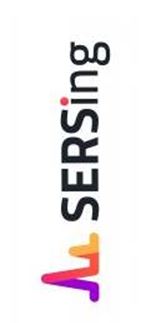



The EU-funded SERSing project has developed a portable low-concentration liquid chemical hazard detection device. This device combines Raman spectroscopy (SR) with an advanced method called SERS (Surface Enhanced Raman Spectroscopy), and artificial intelligence (AI).
The SERSing project represents a major step forward in addressing chemical hazards by providing a portable, accurate and fast solution for hazardous chemical detection. By combining cutting-edge technologies such as SERS spectroscopy and artificial intelligence, together with real-time geolocation, it enables more efficient crisis management and enhances the safety of responders. This system responds to a crucial need expressed by the immediate intervention services at the International Forum to advance first responder innovation (IFAFRI), and its applications could transform the way chemical threats are detected and managed in the future.
Link to the full article : The device enhancing our protection from chemical threats | SERSing Project | Results in brief | H2020 | CORDIS | European Commission
More information about the project here : Home - SERSing
_______________________________
Le projet SERSing, financé par l'Union européenne, a développé un appareil portable de détection de risques chimiques liquides à faile concentration. Ce dispositif combine la spectroscopie Raman (SR) avec une méthode avancée appelée SERS (spectroscopie Raman exaltée de surface), et de l’intelligence artificielle (IA).
Lien vers l’article complet : Un dispositif qui renforce notre protection contre les menaces chimiques | SERSing Project | Results in brief | H2020 | CORDIS | European Commission
Plus d’informations concernant le projet ici : Home - SERSing
.